CASE STUDY
Water-Related Disasters & Health
A 27-year-old male presents with severe pain in his right leg six days after a typhoon resulted in a severe flooding in his community in the Philippines.
This case will guide you through a clinical encounter to understand the patient's health challenges – and how to respond.
LEARNING OBJECTIVES
Describe the link between climate change and disasters, including water-related disasters
List common direct and indirect health effects due to flood and drought disasters, including both surgical and non-surgical syndromes
Understand the concept of sentinel cases (human and animal) of water-related disease
Recognize role of health care providers in response to water-related disaster
Understand how climate change and extreme weather events interact with healthcare / surgical systems
CLINICAL COMPETENCIES
Take a medical history that screens for water-related health risks
Screen for water-related health issues in the physical exam, including those requiring surgical intervention
Detect and manage sentinel cases of water-related disease
Recognize and manage necrotizing soft tissue infections (NSTIs) as a surgical emergency
A Continuing Medical Education activity presented by the Stanford Center for Innovation in Global Health and the University of Washington. View CE information and claim credit HERE.
Accreditation
In support of improving patient care, Stanford Medicine is jointly accredited by the Accreditation Council for Continuing Medical Education (ACCME), the Accreditation Council for Pharmacy Education (ACPE), and the American Nurses Credentialing Center (ANCC), to provide continuing education for the healthcare team.
Credit Designation
American Medical Association (AMA)
Stanford Medicine designates this Enduring Material for a maximum of 1.5 AMA PRA Category 1 Credits™.
Physicians should claim only the credit commensurate with the extent of their participation in the activity.
American Nurses Credentialing Center (ANCC)
Stanford Medicine designates this Enduring Material for a maximum of 1.5 ANCC contact hours.
American Academy of Physician Associates (AAPA)
Stanford Medicine has been authorized by the American Academy of PAs (AAPA) to award AAPA Category 1 CME credit for activities planned in accordance with AAPA CME Criteria.
This enduring activity is designated for 1.5 AAPA Category 1 CME credits. Approval is valid until December 14th, 2026. PAs should only claim credit commensurate with the extent of their participation.
Approach to Water-Related Disasters
Consider the following as you work through this case:
Extreme weather events including drought and flooding can produce an upsurge in cases that involve exposures to infectious, chemical, and physical hazards.
Health care providers need to assess and manage individual patients and also participate in the larger health system response to such disasters.
History
Taking a clinical history of your patient yields the following information:
Chief complaint
- Leg pain
History of present illness
- Patient is brought to an emergency medical clinic by his brothers, who carried him through knee-deep flood water on a homemade stretcher.
- He has been experiencing pain in his right leg for the last 5 days that has been getting progressively worse in intensity despite taking ibuprofen at home. He is now in very severe pain.
- He has been having difficulty walking with associated malaise, chills, and fever and loss of appetite for the last 48 hours. His brothers noted he woke up confused this morning, so they decided to bring him in despite the flood water.
Past medical & surgical history
- Asthma
- Received childhood vaccines
- Unsure date of last tetanus shot
Medications
- Fluticasone nasal spray twice daily
- Albuterol inhaler as needed
Allergies
- Mild seasonal allergies
Family history
- Mom: breast cancer
- Paternal aunt: breast cancer
Social & environmental history ("Social-E")
- Smoked cigarettes for 2 years from ages 18-20
- Drinks alcohol on the weekends with friends
- Works as a mechanic
Review of systems
- Headache
- Dry mouth
- Otherwise unremarkable
Discussion
What additional information would you want to know?
Key Questions for Patient
Learn how to do assess the health risks of an environmental hazard:
When taking a history of your patient, pay particular attention to the “Social-E” section – assessing acute impacts like weather or exposures, but also assessing baseline factors, such as access to clean water and shelter.
How has the recent rain and flooding affected you?
Patient has spent time wading through flood waters helping rescue livestock and people in his village.
He recalls falling and striking his legs on submerged objects and getting lacerations on his calves and shins.
He has been unable to change his wet clothes or boots regularly due to the flooding.
He also reports obtaining his water from a well which the family usually boils, though this has been affected by the flood.
Expect delayed presentations to care and anticipate how this may affect what conditions or diseases present.
Note the kinds of conditions you may expect related to the type of disaster and settings where it occurs.
Repeated exposure to flood waters raises possibilities of particular infectious and non-infectious conditions.
Start to form a differential diagnosis during this rapid clinical assessment.
You may need to gather more detailed history after management of emergent conditions.
Key Points
consider the following as you begin evaluating your patient:
Discussion
What information from the physical exam would you want to know?
What features of the physical exam will be critical in this case?
Physical Exam
When you examine your patient, you learn the following:
General
- Ill-appearing, laying on cot, pale, appears to be in very severe pain
- Vitals: Blood pressure: 80/55, Heart rate: 127, Temp: 38.5 C, Respiratory rate: 24, O2 saturation: 100% in room air
Head Eyes Ears Nose Throat (HEENT)
- Dry mucous membranes
Neck
- Supple
Chest & lungs
- Clear bilaterally
Cardiovascular
- Tachycardia, no murmurs rubs or gallops
Abdominal
- Soft, non distended, non tender
Skin & musculoskeletal
- Wound on right medial lower leg with large area of surrounding erythema and extensive edema
- Severe pain around right medial leg wound that does not seem to correlate with exam
- Crepitus on palpation of the leg area
- Swelling and ecchymosis around the right ankle, active and passive motion intact, but pain with active motion and with weight bearing, no bony tenderness
- Pale, moist skin with wrinkling in bilateral feet and left lower extremity
Neurologic
- Slightly confused, otherwise grossly symmetric face
- Moves all extremities and strength appears to be 5/5
- Sensation intact to light touch throughout, except for anterior right lower leg, which has decreased sensation

Key Learning Points
important information for the physical exam:
An accurate and efficient physical exam in the disaster setting can be diagnostic. General assessment & triage is critical: is the patient well appearing or ill?
In about a third of necrotizing soft tissue infections, you may see skin bullae, necrosis, or ecchymosis. Crepitus is sometimes difficult to appreciate on exam. Absent sensation can be present.
The physical exam is especially critical in a disaster event. You may not have access to what you usually use or any imaging at all.
You also need to constantly think about how to triage patients, your available resources, and personnel.
Discussion
Do you need imaging to make a diagnosis?
What labs are most important?

Diagnostics & Other Testing
information that will be helpful in diagnosing your patient:
WBC 25 x10⁹/L Hgb 10 g/dL PLT 350 x10⁹/L
Blood cultures drawn prior to antibiotic initiation, if feasible
Other labs to be obtained if feasible: Creatinine, LDH, CPK, lactate
Imaging: With this exam, urgent surgical debridement is required rather than imaging
If you have access to an X-ray, this can be pursued later to assess for any ankle fracture, although exam is more consistent with sprain
*Keep in mind resources available in your practice setting when making your diagnosis.
Differential Diagnosis
based on what you’ve learned so far, here’s how you might think about a differential diagnosis:
Necrotizing soft tissue infections (NSTIs):
Necrotizing fasciitis (also necrotizing myositis or cellulitis)
Gas gangrene (clostridial myonecrosis)
Additional possibilities:
Cellulitis
Deep venous thrombosis
Ankle fracture vs. sprain
“Immersion foot” (also known as “Trench foot”) result of prolonged immersion
The pain being out of proportion for the exam, the clinical deterioration with hypotension and tachycardia, and the crepitus on exam of leg should prompt concern for necrotizing fasciitis.
Discussion
What additional resources would help with your differential diagnosis?
Key Learning Points
important context for diagnosis:
Etiology of skin and soft tissue infection post flooding:
Typical bacteria:
Gram positives: Staph, Strep
Atypical bacteria:
Saltwater exposure: Vibrio vulnificus, atypical Mycobacterium
Freshwater exposure: Aeromonas hydrophila, Melioidosis
Fungal: Blastomycosis, Mucormycosis
Other waterborne disease with dermatologic manifestations: leptospirosis (occasional rash)
Necrotizing Soft Tissue Infections (NSTIs):
Type 1: polymicrobial infections that typically arise from a chronic, indolent source and spread along fascial planes. Gas is often present. Relatively common compared to other NSTI types.
Type 2: Monomicrobial, and typically gram positive (MRSA, GAS). Seen in patients without underlying illness. Its ill effects are related to both toxin production and rapid growth rate of pathogens. These infections comprise about 10-15% of NSTIs.
Type 3: Monomicrobial infections initiated by a variety of virulent gram positive or gram negative bacilli such as Clostridia, Vibrio, Aeromonas, Eikenella, or Bacillus species. These are the most uncommon of NSTIs.
World Society of Emergency Surgery classification of NSTIs:
Necrotizing cellulitis
Necrotizing fasciitis
Fournier’s gangrene
Necrotizing myositis
Role of Imaging in NSTI Diagnosis:
A rapidly progressive soft tissue infection should be always treated aggressively, as a necrotizing soft tissue infection and imaging should not delay surgical debridement.
Both CT and MRI may be useful for diagnosing necrotizing soft tissue infections. However, MRI may be difficult to perform under emergency situations.
In unstable patients, ultrasound may be useful to differentiate simple cellulitis from necrotizing fasciitis.

If you were to transfer this patient without initial debridement, depending on how long that transfer will take, that may drastically increase this patient’s mortality.
Surgical care:
Irrigation, urgent surgical debridement for source control
The longer the delay in surgery the higher the mortality
Debride necrotic tissue, continue until healthy bleeding tissue is observed
Copious irrigation of wound
Leave open and place dressing
Topical antimicrobial dressings
Negative pressure wound therapy (wound vac if available)
Repeat surgical exploration within 24 hours to assess continued spread and q1-2 days thereafter until necrotic tissue is absent.
Prioritize transporting patient to higher level care, since patient requires large amount of resources with repeat operations.
Consider challenges in transporting high-acuity patients from potentially inaccessible care facilities.
Non-surgical care:
Antibiotics – broad spectrum coverage
Type 1 NSTI:
Piperacillin-tazobactam + vancomycin
Carbapenems
Cefotaxime + metronidazole or clindamycin
Type 3 NSTI:vIf there is suspicion for a freshwater infection, such as Aeromonas, coverage consists of doxycycline plus ciprofloxacin or ceftriaxone
Modify coverage based on culture and susceptibilities.
Consider availability of antibiotics in the context of a disaster due to disruptions in the supply chain. Consider alternative regimens based on known antibiotic mechanisms of action.
Different areas may have differing availability of antibiotics and resistance profiles.
Management & Treatment
You can help your patient in the following ways:
Tetanus management:
While flood water itself does not cause tetanus, especially in areas with lower vaccination coverage, tetanus cases do occur after floods.
Provide appropriate tetanus coverage if available for patients with an unknown tetanus vaccination history.
Wound care management - emergency wound care:
Apply direct pressure to any bleeding wound to control hemorrhage. Tourniquets are rarely indicated.
Examine wounds for gross contamination, devitalized tissue, and foreign bodies.
Remove constricting rings or other jewelry from injured body part.
Cleanse the wound periphery with soap and sterile water or available solutions. Use analgesia if possible.
Wound care basics:
Early and thorough wound excision and irrigation
Adequate wound drainage
No unnecessary dressing changes
Delayed primary closure
Antibiotics as an adjuvant
Anti-tetanus vaccine and immunoglobulin if necessary
No internal bone fixation due to infection risk
Early physiotherapy
Prevention
You can reduce patient vulnerability and environmental exposures through the following considerations:
Reducing host vulnerability / susceptibility (host factors)
Glucose control for diabetics
Assess for adequate nutrition
Advise patients who are immunocompromised to take extra care with wounds and water exposure
Ensure early wound management to avoid complication
Reducing exposures / improving environments (environmental factors)
Avoid prolonged wearing of wet clothing and footwear
Wash well after exposure
Boil water for drinking and cooking
Role of Healthcare Providers in Disaster
key responsibilities:
Triage of cases
Management of cases: acute and post-disaster
Referral and transport of cases requiring higher levels of care
Detection and reporting of sentinel cases of disease and other reportable conditions
Coordination with Emergency Operating Center or other Incident Management System

Beyond the Clinic
Take a look at Local and global factors:
Climate change and extreme weather events:
Increasing greenhouse gasses (GHGs) cause climate change, leading to changes in temperatures, increased frequency and intensity of extreme weather events, and sea level rise. Healthcare systems are part of the problem, producing up to ~5% of global greenhouse gas emissions. If it were a country, it would be the world's 5th largest emitter.
Infections during a disaster response:
After a disaster, there are three phases. In the impact phase (0 to 4 days), infections are likely to be associated with traumatic injuries (e.g., lacerations, punctures) sustained while escaping imminent danger or performing initial clean-up and repairs after a hydrologic event. During the post-impact phase (4 days to 4 weeks), most acute infections, including those involving wounds or related to population displacement, are likely to emerge. Finally, in the recovery phase (after 4 weeks), vector-borne diseases (e.g., dengue, malaria), uncommon infections related to environmental contamination (e.g., leptospirosis), and infections with longer incubation or latent periods are more apt to emerge during post-impact and into the recovery phase.
Human-animal interface:
Health consequences of flooding also arise at the animal-human interface. People may not seek help or evacuate due to fear of losing animals. Animal bites are common during flooding events but are more often from pets rather than wild animals, which should be taken into account when assessing the need for rabies vaccination. Domestic and wild animals are faced with similar threats to humans during flood events, including traumatic injuries and infections. Animals are brought closer to people due to limitations of dry land increasing risks of animal-human conflict, and floods create new and expanded habitats for vectors, especially mosquitoes. Animal carcasses can contaminate water and cause infection risk from contact.
Health systems strengthening:
To ensure that healthcare systems can still function after a natural disaster, the WHO has built an operational framework for building climate resilient health systems, which includes “"integrated risk monitoring and early warning.” Doing so allows a health system to anticipate changing health risks, develop adequate capacity and flexibility, and respond to needs in a timely manner.
Strengthening surgical systems has been proposed as a means of ensuring broader climate and disaster resilience. Strong surgical systems rely on foundational support from components of a comprehensive health care system that also provides crucial non-surgical care (e.g., oxygen, medication supply change, adaptable specialized workforce capacity, etc.).
Health impacts:
Direct health effects of disasters fall into surgical and non-surgical. In surgical settings, penetrating, blunt, and crush injuries can occur. Furthermore, floodwaters disrupt natural gas lines, power lines, sewage systems, and chemical storage tanks, and water can be contaminated. As such, soft tissue infections can arise from a variety of bacteria.
Non-surgical direct health effects include: drowning fatalities (most common cause of death after floods); hypothermia due to submersion in cold water; acute cardiovascular events; carbon monoxide poisoning due to improper use of generators; and psychological stress. Besides such a wide range of effects, there is also the risk of waterborne gastrointestinal diseases (e.g., hepatitis A virus, bacillary dysentery, Campylobacter); vector- and rodent-borne diseases; and respiratory, skin, and eye infections due to lack of sanitation and hygiene.
There are also indirect health effects of natural disasters, including: overcrowding, damage to healthcare infrastructure, loss of healthcare workers, supply chain disruption, and physical damage to health care infrastructure and community. These lead to a loss of access to:
Essential care (e.g., O2 supplies during Hurricane Katrina);
Chronic disease/primary health care (e.g., dialysis care post-Hurricane Sandy in New York City);
Damage to crops / food supplies (leading to starvation / malnutrition);
Loss of income; and
Population displacement.
Case Follow Up
What happens next:
You take this patient for initial debridement in your operating room while resuscitating him with IV fluids and administering IV antibiotics.
When you begin the debridement, you notice gray, murky “dishwater” fluid exuding from the open wound.
You obtain tissue and fluid cultures from the OR.
You debride until you reach healthy, non-necrotic tissue with some bleeding.
You pack the wound with betadine-soaked gauze and wrap it in sterile gauze in multiple layers with an overlying ace bandage (if no wound vacuum is available).
You talk to your team and prioritize the patient for transfer to a higher level of care for repeat debridements while he continues to be resuscitated.

Call to Action
Clinicians can take action to advance planetary health:
At the clinic / hospital:
Participate in disaster planning / preparedness (and response, if applicable)
Ensure adequate referral resources for severe cases
Access data for weather and flood predictions to plan response
Ensure sentinel cases are being reported to health department
In your community:
Communicate with veterinarians about disease outbreaks
Educate public to raise awareness of water-related health risks
Learn more about and strengthen early warning systems and integration with the healthcare system
At the societal level:
Educate policy makers about health impacts of water-related events
Advocate for climate mitigation to reduce health impacts
Summary &
Key Learning Points
ALSO AVAILABLE FOR DOWNLOAD HERE:
Climate change → increasing temperatures, sea level rise, intense storms → extreme flooding
Health effects due to flooding disasters
Direct:
Surgical: trauma, burns, soft tissue infections
Non-surgical: drowning, cardiac, water-/vector-/rodent-borne infections, mental health impacts
Indirect: healthcare infrastructure, food and income security, displacement
Anticipate possible flooding-related health effects based on timeline and exposures
Obtain a history and physical exam in a critical situation that includes assessment of risks for waterborne infections. Think typical organisms (Gram positives) but also atypicals (Vibrio vulnificus and aeromonas etc.)
Anticipate specific surgical needs after flooding events
Specifically for necrotizing soft tissue infections- high clinical suspicion
If NSTIs suspected, emergent surgical management
Understand how climate change and extreme weather events interact with healthcare/surgical systems
Surgical care contributes to climate change: energy-intensive
Climate pressures impact healthcare systems and surgical care delivery: challenges for the severity and volume of surgical needs, resources, and supply chains
Strong healthcare/surgical systems and climate resilience: promote disaster risk reduction
Additional Resources
Lancet Commission on Global Surgery: https://www.thelancet.com/commissions/global-surgery
UN Sendai Framework for Disaster Risk Reduction: https://www.undrr.org/implementing-sendai-framework/what-sendai-framework

References
Acevedo-Guerrero T. Light is like water: flooding, blackouts, and the state in Barranquilla. Tapuya: Latin American Science, Technology and Society. 2019;2(1):478-494. doi:10.1080/25729861.2019.1678711
Bartholdson S, von Schreeb J. Natural Disasters and Injuries: What Does a Surgeon Need to Know?. Curr Trauma Rep. 2018;4(2):103-108. doi:10.1007/s40719-018-0125-3
Coomes OT, Lapointe M, Templeton M, List G. Amazon river flow regime and flood recessional agriculture: Flood stage reversals and risk of annual crop loss. Journal of Hydrology. 2016;539:214-222. doi:10.1016/j.jhydrol.2016.05.027
Ghanghro A, Jokhio M. Epidemiology of dog bites during floods in District Naushahro Feroze, Sind, Pakistan, 2010. International Journal of Infectious Diseases. 2014;21:391. doi:10.1016/j.ijid.2014.03.1226
Goldberg ME, Vekeman D, Torjman MC, et al. Medical waste in the environment: Do anesthesia personnel have a role to play? J Clin Anesth 1996;8:475–9
Health care’s climate footprint: How the health sector contributes to the global climate crisis and opportunities for action
LCoGS
Liang SY, Messenger N. Infectious Diseases After Hydrologic Disasters. Emerg Med Clin North Am. 2018;36(4):835-851. doi:10.1016/j.emc.2018.07.002
MacNeill AJ, Lillywhite R, Brown CJ. The impact of surgery on global climate: A carbon footprinting study of operating theaters in three health systems. The Lancet Planetary Health. 2017;1(9):e381-e388.
Mirza, M.M.Q. Climate change, flooding in South Asia and implications. Reg Environ Change 11 (Suppl 1), 95–107 (2011). https://doi.org/10.1007/s10113-010-0184-7
Noel Gibney RT, Sever MS, Vanholder RC. Disaster nephrology: crush injury and beyond. Kidney International. 2014;85(5):1049-1057. doi:10.1038/ki.2013.392
Oshiro K, Tanioka Y, Schweizer J, Zafren K, Brugger H, Paal P. Prevention of Hypothermia in the Aftermath of Natural Disasters in Areas at Risk of Avalanches, Earthquakes, Tsunamis and Floods. International Journal of Environmental Research and Public Health. 2022; 19(3):1098. https://doi.org/10.3390/ijerph19031098
Tieszen ME, Gruenberg JC. A quantitative, qualitative, and critical assessment of surgical waste. Surgeons venture through the trash can. JAMA 1992;267:2765–8
World Health Organization. Operational Framework for Building Climate Resilient Health Systems. World Health Organization; 2015. Accessed April 12, 2023. https://apps.who.int/iris/handle/10665/189951



























